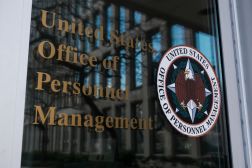U.S. CIO developing ‘State of IT Report’ to complement IT modernization legislation

While the latest IT modernization bill that quickly passed the House has taken a bit of a pause in the Senate, U.S. CIO Tony Scott is planning for “a set of predicate activities … that have to take place” whether federal agencies get a $3 billion kickstart fund or nothing at all, he said Thursday.
Scott’s office plans to release a “State of IT Report” soon that gives “an agency-by-agency look, but also an enterprisewide look at the state of IT … not only where we’re at, but work that’s underway and also what some of the opportunities are in the next short period of time.”
Before any agency, regardless of funding, takes the plunge into a modernization project, he said, “You have to know where you are. You have to understand what you’ve got.”
This report will provide that view governmentwide, he said, not only for this administration but more importantly for the next.
“That’s critical not only for this administration but as we transition to the next administration that the incoming teams have a great situational awareness, visibility of where we are,” Scott said at an ACT-IAC IT Modernization Forum. “One of my hopes is that it can … serve as a starting point for the dialogue about what the priorities are in the next administration, whether we get modernization funding or not.”
That funding now is the critical issue as the Modernizing Government Technology Act is deliberated in the Senate. Currently there is not money associated with the bill, which passed the House Sept. 22. Rather it sets up “receptacles” or “bank accounts,” as Scott describes them, within CFO Act agencies and a central fund to be managed by the General Services Administration.
That lack of starter funding “is a problem that we hope to correct as we go further down the process,” the U.S. CIO said. “It’s not a criticism; it’s kind of the state of play. Whatever ends up in there, if anything, remains to be seen.”
The original IT Modernization Act proposed earlier this year called for $3 billion in a centralized fund for agencies to apply for by degree of need. That $3 billion could address around $15 billion worth of modernization projects over a couple of years, Scott said.
Where legislators may fear putting more money in the hands of agencies for IT projects — which are notorious for going over budget, going over schedule or never being completed — he said this scenario differs.
“If I give you a dollar, you don’t treat it the same way as a dollar I lend you that you have to pay back,” Scott said. “That skin in the game commitment is a key part of the proposal.”
But with time running out in this administration, compromise is the name of the game, and Scott said it’s important now to get something passed to work with and begin learning from experience where the right balance is.
“We’re going to make some mistakes along the way, I’m quite sure, but … it’s important I think we get started, we get some momentum and we get the lessons learned very quickly in terms of what it’s really going to take,” he said. “And over time one of the most important things is that as a community … that we send the right signals to Congress and whoever is in the administration.”
However, Scott’s not sure the bill as it stands with no money on the table is enough to make meaningful progress around IT modernization.
“I don’t think we’ll know until we’re a little further down the road,” Scott told reporters after the event. “I suspect it’s not going to be enough, but I don’t want to try to dimensionalize it too much until we get some experience under our belt.”
“In the absence of another approach, this seems like the best thing we can do at this particular point,” he said. “But at the same time, everybody realizes it’s a journey that will take place over multiple years.”






